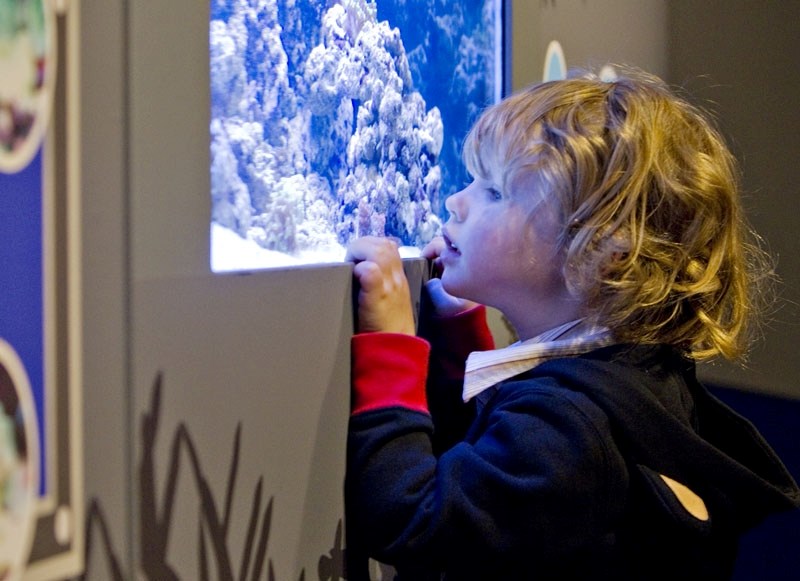For a few moments just imagine floating in a fluid universe at the bottom of the dark oceans surrounded by gelatinous creatures and bioluminescent living things. It is both frightening and mesmerizing.
The mysteries of the ocean and its alien landscape have always ignited our imagination. Covering 70 per cent of the Earth’s surface, the deep sea is a largely unexplored terrain full of surprises and we are all curious as to what’s around the next coral reef.
This summer the Royal Alberta Museum (RAM) has mounted Creatures of the Abyss, a travelling exhibit that plumbs the depths of this dark and inhospitable world.
Produced by Science North in Sudbury, Ont., the family exhibit incorporates life-size models of creatures, short videos, button-pushing interactive kiosks, flip-up panels and tailor-made tours. RAM curators have even generated special rippling light effects and hung models of fish from the ceiling to create a bottom-of-the-ocean seascape feel.
As a whole, the displays challenge the viewer to discover by learning about ocean topography, water pressure, the different creatures living at varying depths, selective adaptations, symbiotic relationships and climactic issues such as ice cap melting and acid rain accelerated by humans.
The exhibition’s focal point is a fibreglass model of an eight-metre long colossal squid caught in the Antarctic water in 2007. Weighing about 495 kilograms, it uses its two waving tentacles and eight arms for propulsion. Its main predator is the sperm whale.
When it wants to make a quick getaway from a predator, the squid shoots water forward and it instantly snaps backwards. “There’s a siphon under its head. Water is sucked in, the muscles contract and shoot the water out, and the squid moves back. It’s a very energetic way to move around,” says Mark Steinhilber, RAM’s head of life sciences.
Steinhilber first saw the exhibit several years ago in Honolulu at the Bishop Museum and felt that it would be a great fit for landlocked Albertans. “There’s a saying, ‘People come to museums to see and learn what they almost know.’ Here you see coral and creepy looking fish. On the prairies we don’t see them often, but there’s an opportunity to learn about them.”
As landlubbers used to the flat, open vistas of grain fields, the diversity of creatures living at depths as far down as 11,000 metres in the deepest part of the Marianas Trench is almost unimaginable. One panel states, “The Ocean provides a staggering 99 per cent of the space available for living things on our planet.”
Even their names are intriguing — jellyfish, Dumbo octopus, sea cucumbers, viperfish and nudibranches (members of the starfish family).
In the centre of the exhibit is a life-size, two-dimensional black sperm whale with flip panels depicting some surprising life forms. One describes the giant larvacean living at 1,000 metres depth. A small organism, it forms a bluish cloud. “It’s a mucous-like net. It picks up marine snow, stuff that drifts down from above. It detaches the net in as little as four hours and it (the net) sinks to the bottom and becomes a huge source of food for deep sea inhabitants.”
This glimpse into the planet’s underworld runs until Sept. 11. The museum is located at 12845 – 102 Ave. Hours are Monday to Sunday 9 a.m. to 5 p.m. Admission $11 for adults, $8 for seniors, $7 for students and $5 for youth. There is no cost for children six and under.




